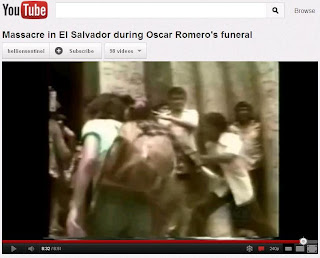 |
| Before and after: a cloth as large as the destruction |
One is from Amadeus (don't have to say, I hope, who's portrayed in the movie). The other, a more recent production, Shakespeare in Love. (Ditto on explaining).
Knowledgeable people about either one of the two principal characters in each movie will tell you, most likely, that each movie abounds in historical inaccuracies. One thing very few will argue with is the manner in which cinematographers have portrayed the period.
The two settings I am thinking of are the theaters: the one where Mozart first stages his Magic Flute and also the one where (if we are to believe the film producers) Romeo and Juliet was first shown.
However inaccurate or imagined the plot for either movie may be, there is nothing wrong with the way their audiences are portrayed in those movies.
Go here and you will read what is known by many and is so precisely illustrated in the movie: “It is recognized that Papageno’s first audience was somewhat proletarian, but the opera was seen by a large cross-section of society.”
The audience at that fictitious first showing of Romeo and Juliet may have been perhaps less proletarian than the one being delighted by Papageno and Papagena. But still pretty much quite different from whom we may have imagined was in assistance: the literati, the wealthy, the nobility were there, of course, but do take a look at the enthralled crowd. Mostly common, ordinary people: merchants, peddlers, and so on.
Transport yourself back a few centuries and think of how the great big stories of humanity were relayed from one generation to another.
The Iliad, the Aeneid, most (if not all) of what now is mankind's cultural heritage was given that status by the people.
However chic the tango is now for thousands all over the world, let's not forget that it was born in the quilombos and not in the sparkling dance halls of South American cities.
They were called something else, but jazz (in which now many intellectual armpits delight) began pretty much in the same type of locales.
Fast-forward a few decades and get away from the squalor surrounding the last two examples.
The recently destroyed mural La Armonía de mi Pueblo (My People's Harmony) at the National Cathedral in San Salvador was certainly not a product of such an environment.
Its wanton destruction was rightly decried.
A few days after the pneumatic hammers did away with the mural, EL DIARIO DE HOY's editorial, La Nota del Día, pointedly condemned it: “Whoever may have ordered the demolition … is lacking a sense of symbols and symbolic actions, of what can be catalogued as elevated cultural expressions.”
For a dwarfish clique (not talking about their size, mind you), the sense of outrage prompted derision and mockery. That the stupidity of the destruction was so celebrated doesn't make it less of an affront to everybody.
It should be of no consolation to anybody to realize that however educated they may be, it would be wrong to think of them snobs because of their derision.
Uncouth might be the better word.




